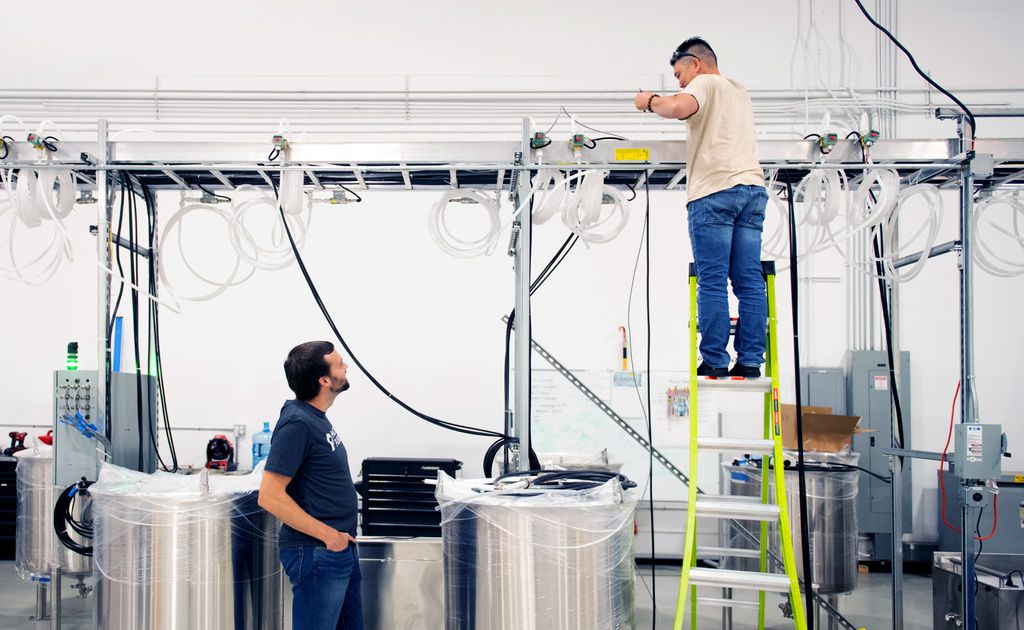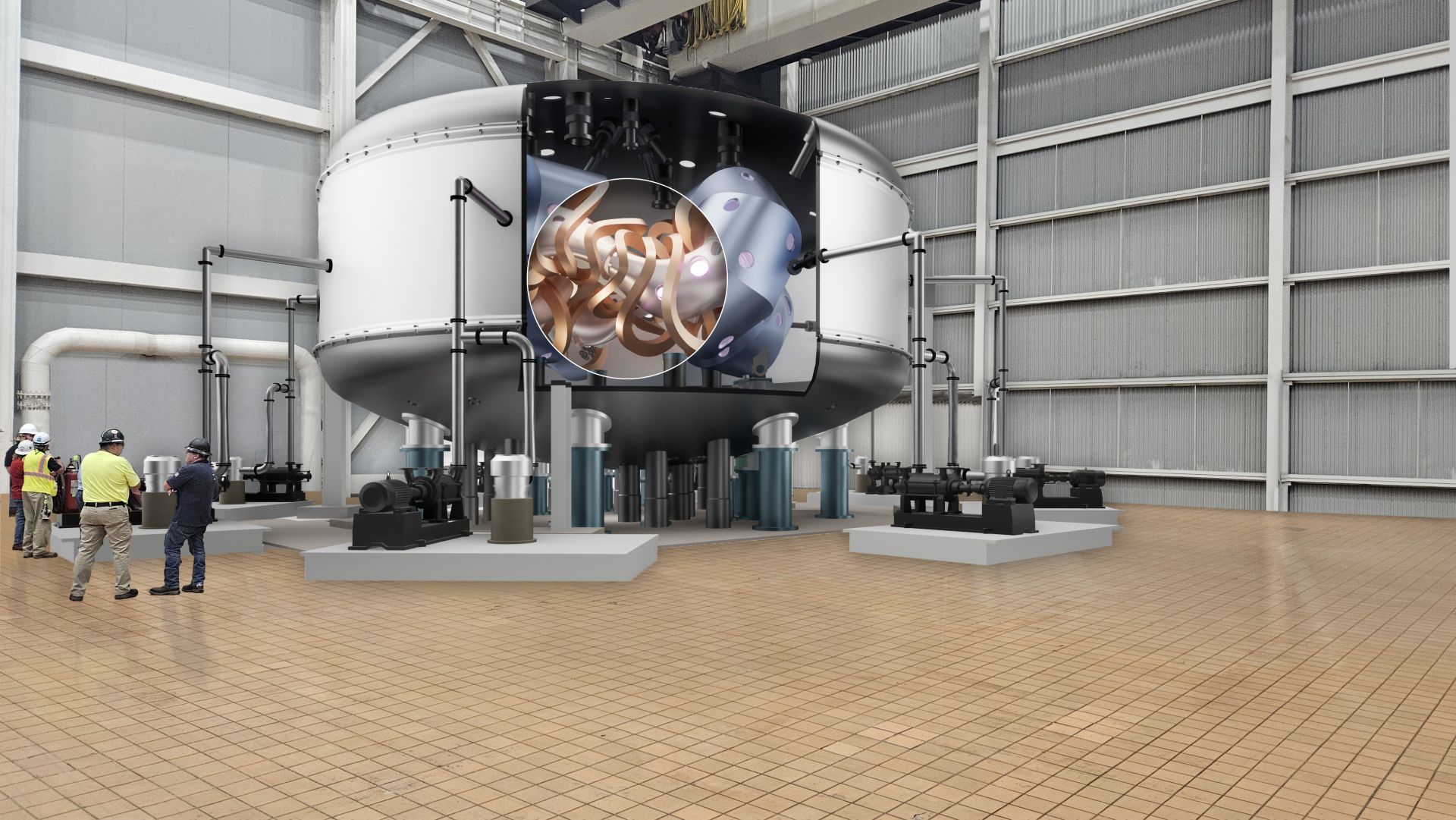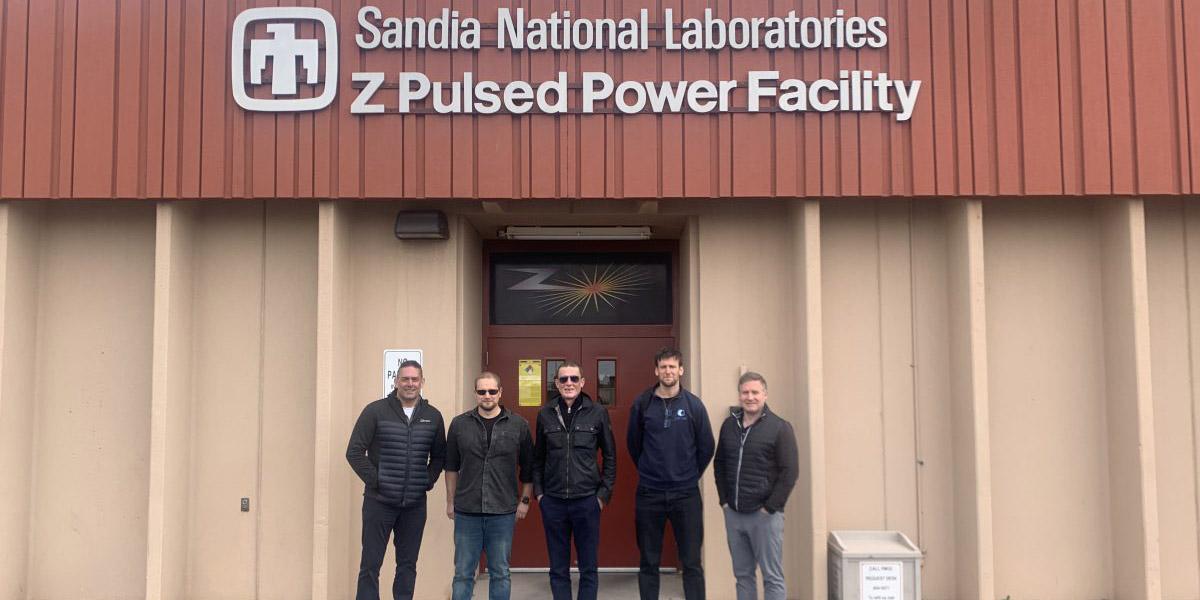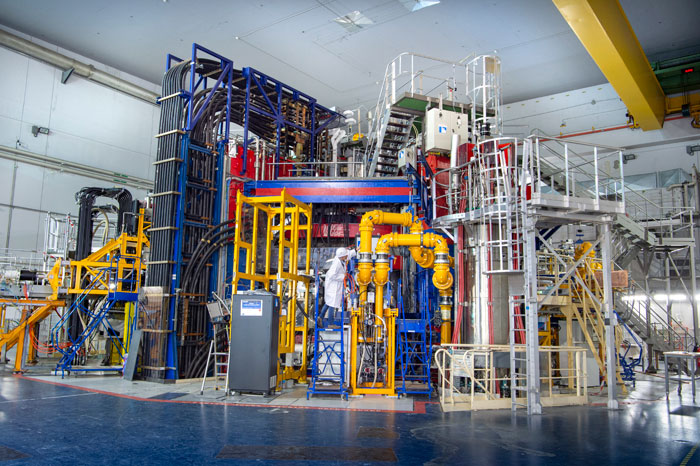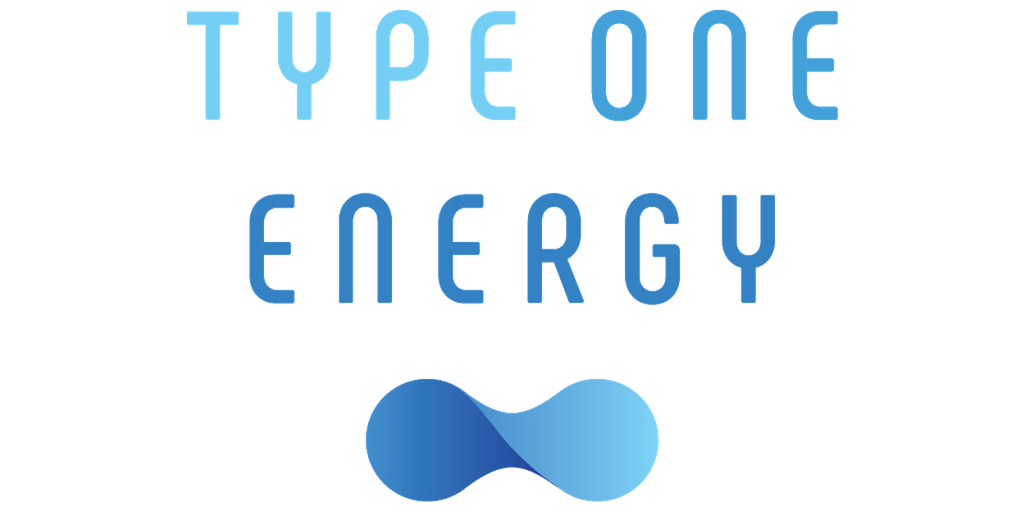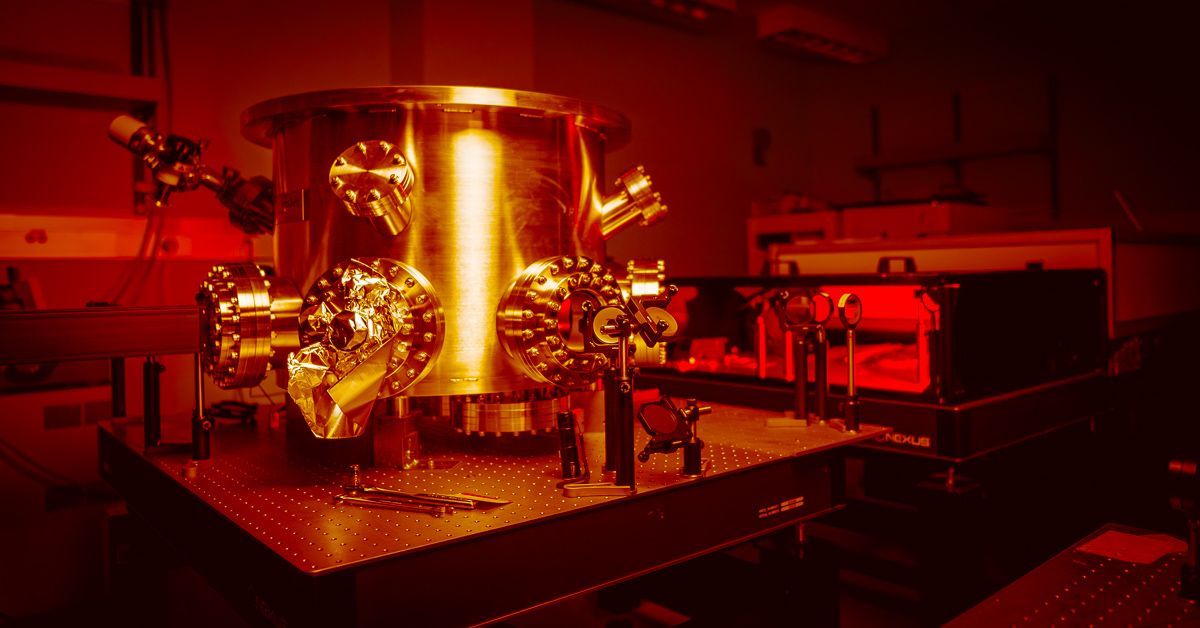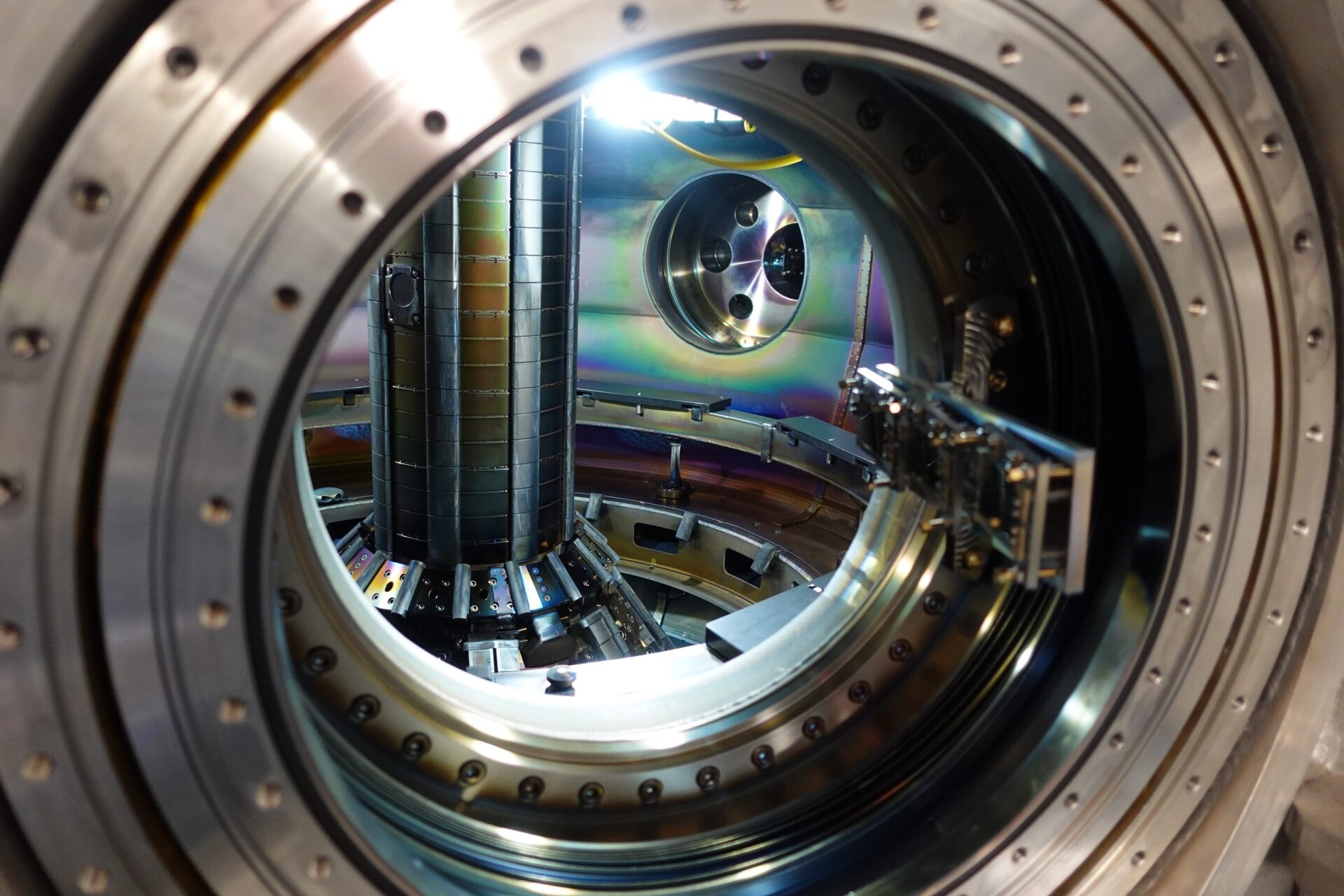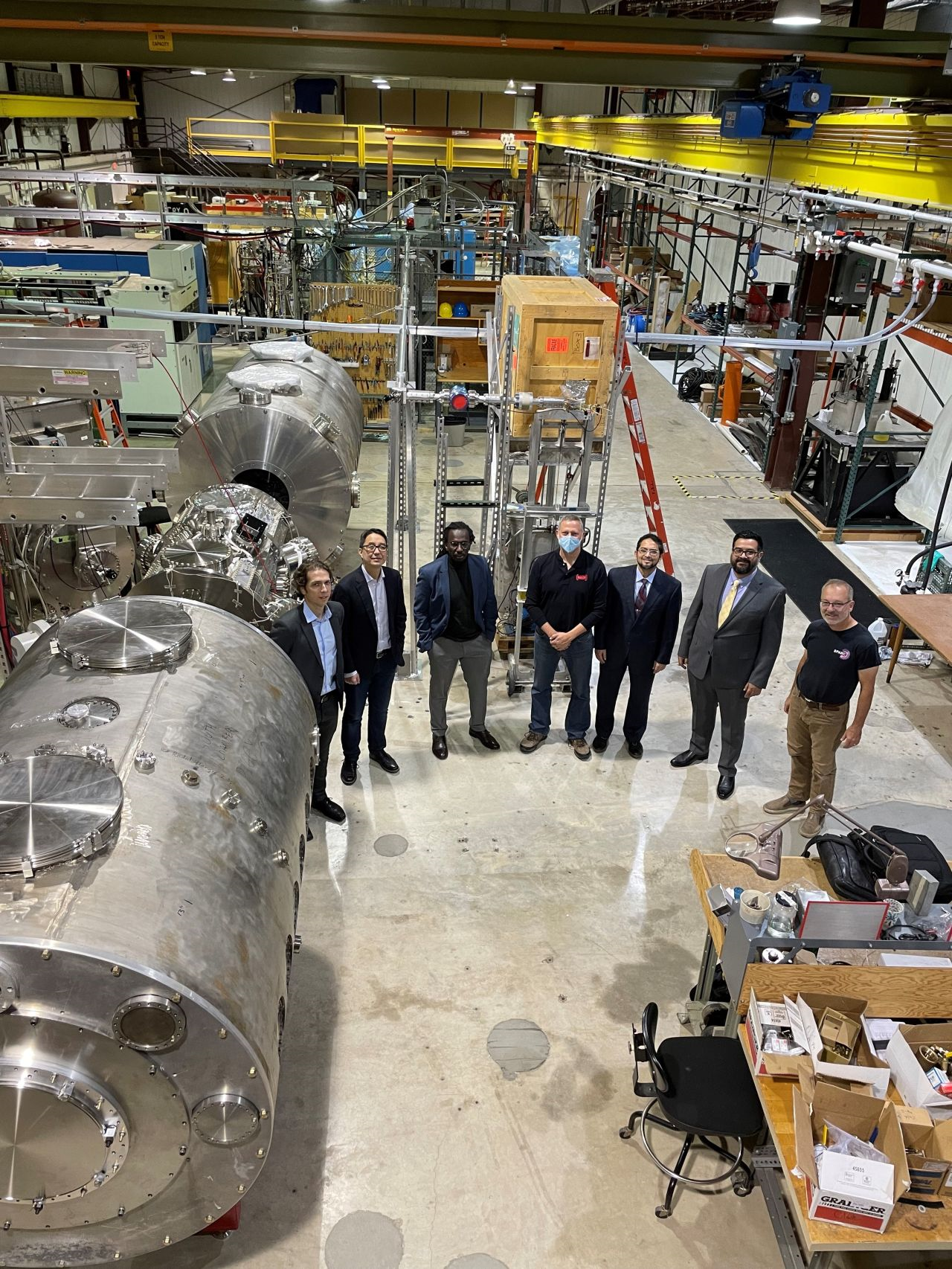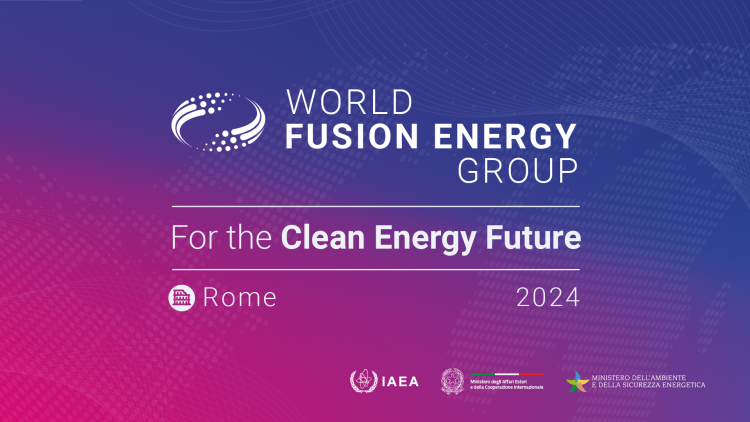The ITER tokamak pit with the two vacuum vessel sector modules installed. (Photo: ITER)
Westinghouse Electric Company announced that it has signed a $180 million contract with the ITER Organization for the assembly of the vacuum vessel for the fusion reactor being built in southern France. Designed to demonstrate the scientific and technological feasibility of fusion power, the ITER tokamak will be the world’s largest experimental fusion facility.
A visualization of the SPARC tokamak experiment. (Image: Ken Filar/PSFC Research Affiliate)
In its June 30 announcement of a new deal to purchase 200 MW from Commonwealth Fusion Systems' (CFS) first ARC fusion power plant planned for Virginia, Google called it “the largest direct corporate offtake agreement for fusion energy” ever. While Google made no mention of its plans for the power, its press release noted that clean energy is needed to reduce data center emissions.
Concept art of Pacific Fusion’s planned demonstration system. (Image: Pacific Fusion)
Pacific Fusion has a staff that knows its way around pulsers and inertial fusion, and an ongoing collaboration with General Atomics. Today, the two companies are announcing plans to test Pacific Fusion’s pulser-driven inertial fusion energy concept, with commercial fusion power as the goal.
“We are building a fusion machine and testing all equipment—including components and a pulser module—at our Pacific Fusion test center,” Pacific Fusion cofounder and chief technology officer Keith LeChien told Nuclear News. “GA’s engineering expertise remains an important part of our progress, and we expect this collaboration to continue through future phases of development.”
Pacific Fusion plans to build its demonstration system in Fremont, Calif. (Photo: Pacific Fusion)
Inertial fusion energy (IFE) developer Pacific Fusion, based in Fremont, Calif., announced this morning that it is on target to achieve net facility gain—more fusion energy out than all energy stored in the system—with a demonstration system by 2030, and backs the claim with a technical paper published yesterday on arXiv: “Affordable, manageable, practical, and scalable (AMPS) high-yield and high-gain inertial fusion.”
Concept art showing Type One Energy’s Infinity One prototype stellarator inside TVA’s Bull Run fossil plant. (Photo/Image: Business Wire)
Fusion startup Type One Energy has announced the publication of a baseline physics design basis for its proposed Infinity Two stellarator fusion pilot power plant. The design basis was published in a series of seven papers in a special issue of the Journal of Plasma Physics. According to the company, the design basis realistically considers for the first time the relationship between competing requirements for plasma performance, power plant startup, construction logistics, reliability, and economics utilizing actual power plant operating experience.
Representatives of First Light Fusion stand outside Sandia’s Z Pulsed Power Facility. (Photo: First Light Fusion)
First Light Fusion announced last week that it has set a new record for the highest quartz pressure achieved on Sandia National Laboratories’ Z machine using its amplifier technology to achieve an output pressure of 3.67 terapascal (TPa)—roughly doubling the pressure the company reached in its first experiment on the machine one year ago.
The WEST tokamak. (Photo: L. Godart/CEA)
The French magnetic confinement fusion tokamak known as WEST maintained a plasma in February for more than 22 minutes—1,337 seconds, to be precise—and “smashed” the previous record plasma duration for a tokamak with a 25 percent improvement, according to the CEA, which operates the machine. The previous 1,006-second record was set by China’s EAST just a few weeks prior. Records are made to be broken, but this rapid progress illustrates a collective, global increase in plasma confinement expertise, aided by tungsten in key components.
Korea’s KSTAR tokamak. (Photo: Korea Institute of Fusion Energy)
Concept art showing Type One Energy’s Infinity One prototype stellarator inside TVA’s Bull Run fossil plant. (Photo: Business Wire)
Type One Energy said it has entered into a cooperative agreement with the Tennessee Valley Authority to jointly develop plans for a potential TVA fusion power plant project in the Tennessee Valley region using Type One Energy stellarator fusion power technology. The company said its 350-MWe fusion pilot power plant, named Infinity Two, could provide a complementary source of baseload electrical generation for the region as early as the mid-2030s.
An experimental chamber that will be used by UC San Diego as part of the TINEX project. (Photo: David Baillot/UC San Diego Jacobs School of Engineering)
The University of California–San Diego has joined a new research collaborative focused on overcoming critical obstacles in developing and scaling up inertial fusion power plants. Led by San Diego-based General Atomics, the group was one of six research teams that were collectively awarded $107 million in January by the Department of Energy as part of the Fusion Innovative Research Engine (FIRE) Collaboratives.
Thea Energy, one of three fusion companies that have met early milestones in the design of a fusion pilot plant has opened a new headquarters facility in Kearny, N.J. (Photo: Thea Energy)
The Department of Energy announced six Fusion Innovative Research Engine (FIRE) collaboratives set to receive funding of $107 million on January 16. The six selected teams represent a first round of awards from a funding opportunity announcement released in May 2023 as part of the DOE Office of Fusion Energy Sciences’ (FES) goal of creating a “fusion innovation ecosystem.”
A rendering of Commonwealth Fusion Systems planned ARC power plant. (Image: CFS)
Commonwealth Fusion Systems (CFS) has announced that it plans to build a fusion power plant, named ARC, at the James River Industrial Park in Chesterfield County, Va.—and that it expects to be the first company to make fusion power available at grid scale.
The Acceleron Fusion team at the High Intensity Proton Accelerator facility at the Paul Scherrer Institute in September 2024. (Photo: Acceleron Fusion)
Cambridge, Mass.–based fusion startup Acceleron Fusion announced that it has closed a $24 million Series A funding round co-led by Lowercarbon Capital and Collaborative Fund. According to Acceleron, the funding will fuel the company’s efforts to advance its low-temperature muon-catalyzed fusion technology.
Tokamak Energy’s ST40. (Photo: Tokamak Energy)
Tokamak Energy’s ST40 experimental fusion facility will receive a $52 million upgrade under a joint public-private effort with the U.S. Department of Energy and the U.K. Department of Energy Security and Net Zero (DESNZ) aimed at advancing the fusion science and technology needed to deliver a future pilot plant.
The Realta Fusion and ARPA-E team at the WHAM facilities in 2023. (Photo: DOE/ARPA-E)
TitletownTech, a venture capital firm formed out of a partnership between Microsoft and the Green Bay Packers, has invested in Realta Fusion, a private fusion startup company that was spun out of an ARPA-E-funded fusion project at the University of Wisconsin–Madison in 2022. Realta is developing modular, compact, magnetic mirror fusion energy generators as an economic, zero-carbon solution to power AI-driven infrastructure and other industrial applications. TitletownTech did not disclose the details of its investment.
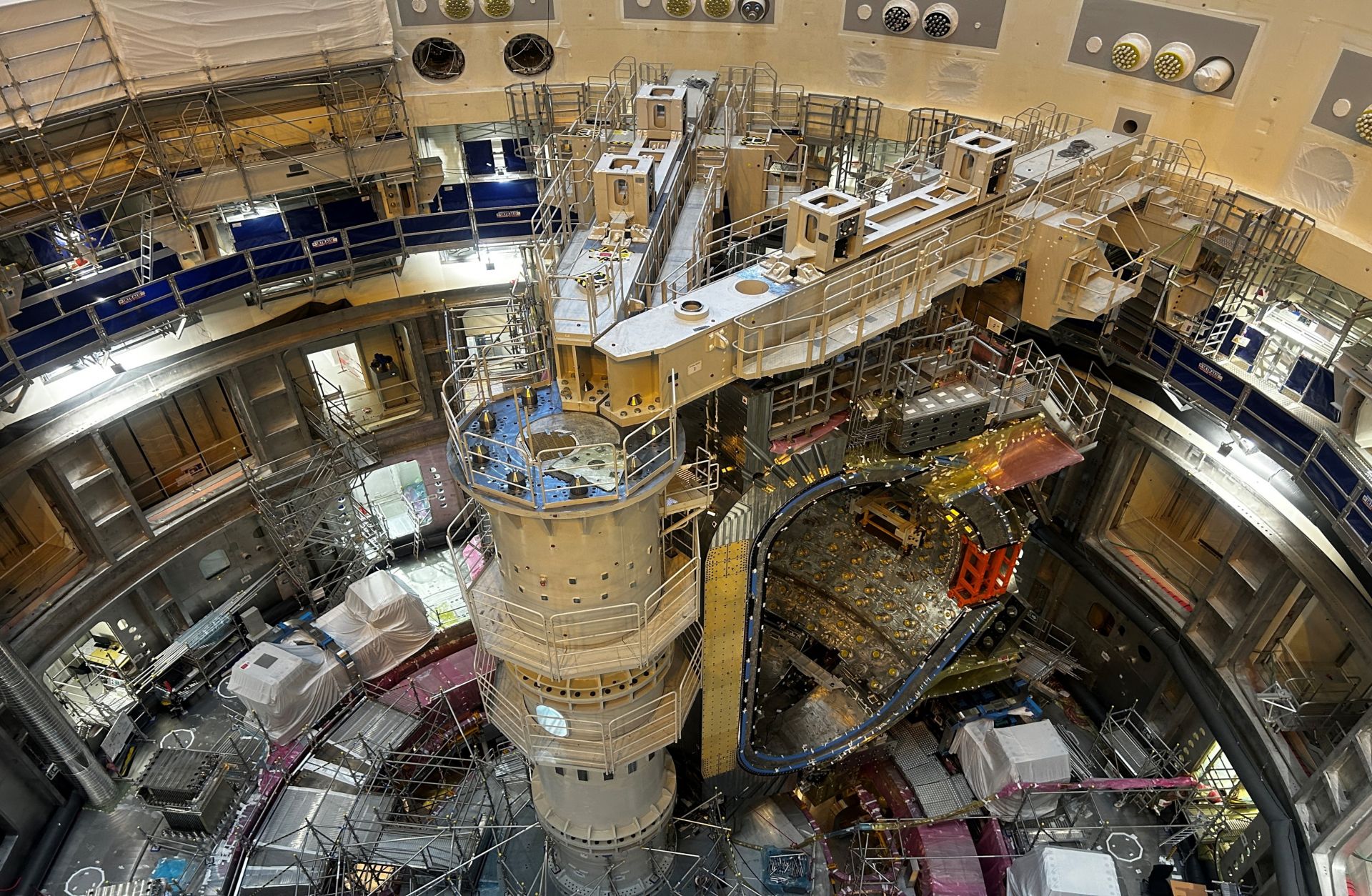



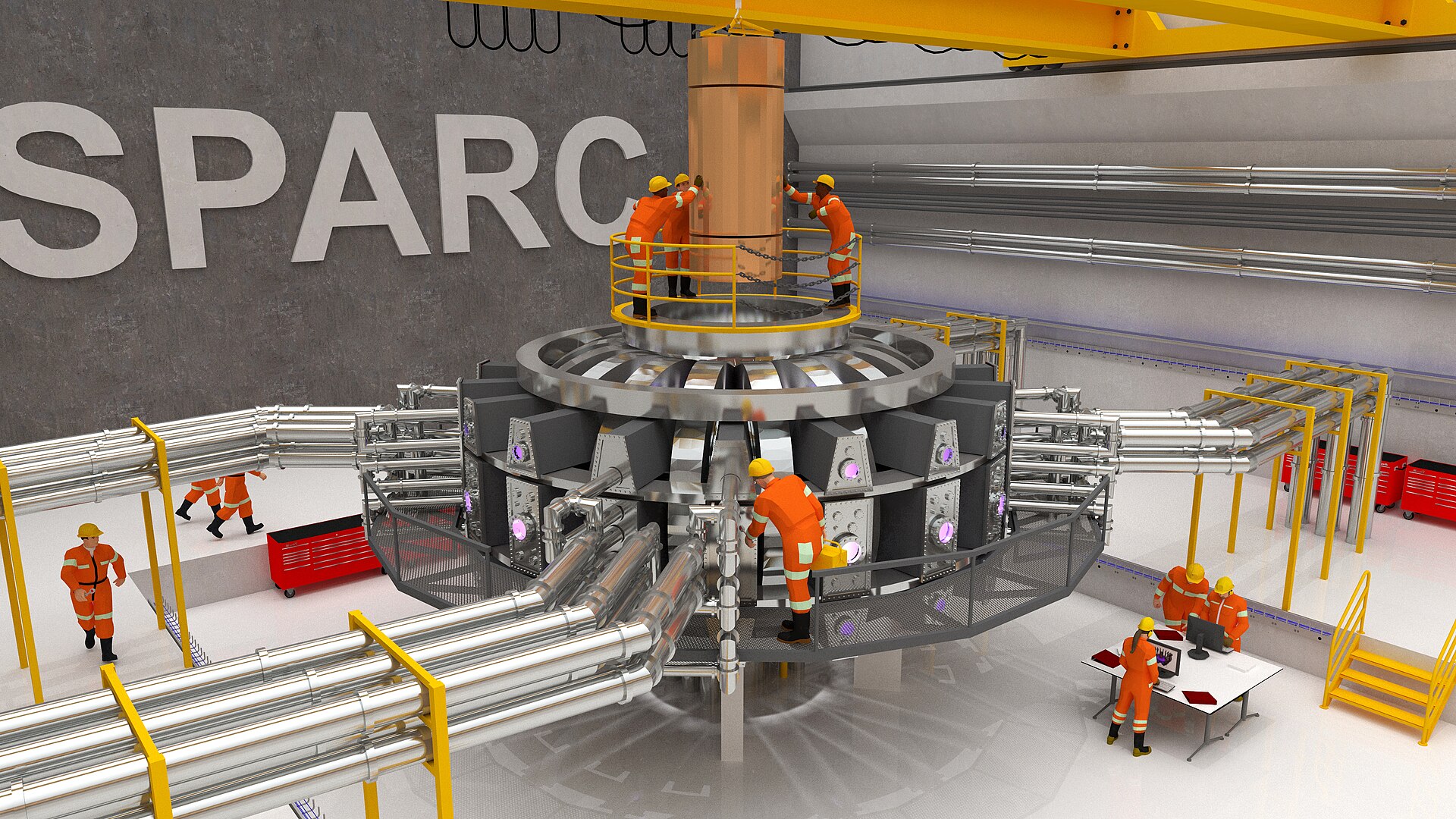
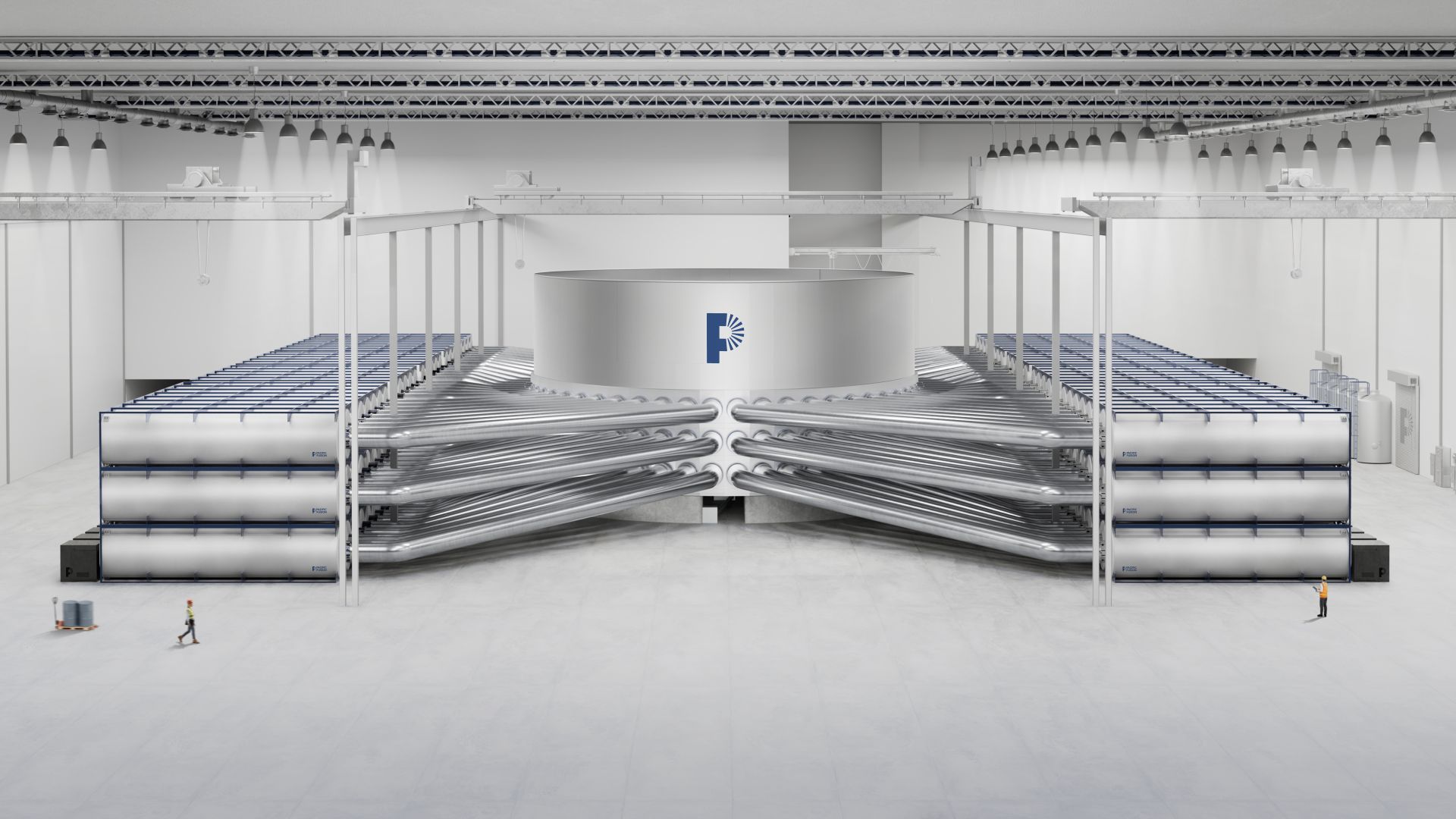.jpg)
